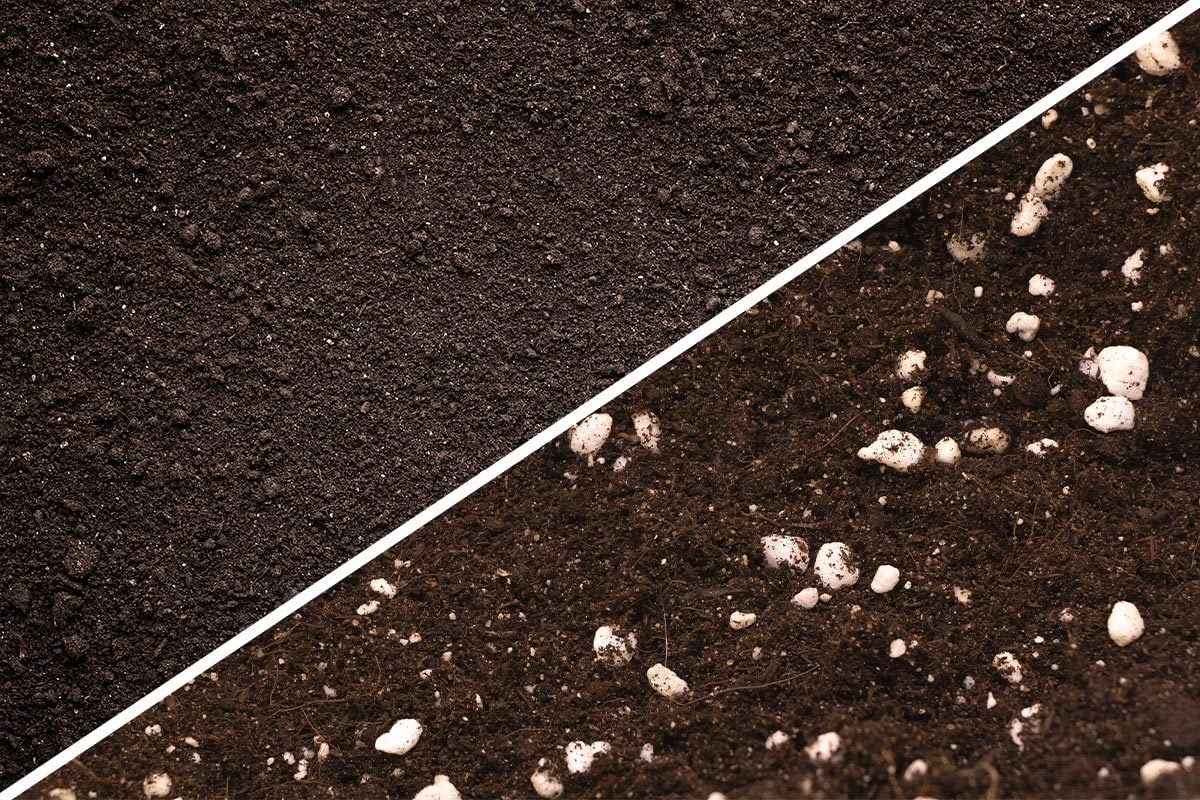Soils aren't all alike. You'll be less discombobulated in garden stores if you know how garden soil differs from potting soil.
Our editors and experts handpick every product we feature. We may earn a commission from your purchases.Learn more.


Soils aren't all alike. You'll be less discombobulated in garden stores if you know how garden soil differs from potting soil.
Our editors and experts handpick every product we feature. We may earn a commission from your purchases.Learn more.
My wife is the gardener. I’m the grunt who digs the dirt. But gardening grows on me, and now I know not to use the word “dirt.”
“We refer to it as soil, because dirt is a four-letter word,” says Tony Provin, Ph.D., a professor and soil chemist at Texas A&M Agrilife Extension in College Station. “Of course, so is soil, but …”
Not all soil is the same, and there’s a difference between garden soil and potting soil. Here’s how they compare in composition, cost and use.
On This Page
Garden soil is about $1 less per bag at Ace Hardware than potting soil, but typically you buy more of it than potting soil.
Soil is naturally found under your lawn, the result of your climate and environment. The top six to eight inches, aka topsoil, contains mineral and organic matter that provides nutrients for plants.
Garden soil in a bag is different from natural soil in your backyard. Garden soil is less variable and has extra organic matter mixed in, like compost, peat, bark shredding or fertilizer.
“Typically, you add garden soil according to the amount of clay you have,” says Daniels. “With large amounts of hard clay, it’s hard for plants to get established and grow. Or you have a lot of sand, which does not hold water. So you’d bring in garden soil to amend that so the soil is able to hold water better.”
Generally, garden soil is best for outdoor, in-ground applications. Not all garden soil is the same. Provin once bought 30 bags off one garden-store pallet and another 30 bags off another pallet, “and they were entirely different,” he says.
“Lots of times you find less than desirable properties in garden soil,” he says. “I look for broken bags in the pallet. I check the contents and get an idea of what I’m purchasing, whether it’s more soil material or clay balls with a bunch of wood chips around them. You will find less of this variability in local stores. But buy one bag and check it out.
“If you’re building beds and need a large supply, seek a local soil supplier and go see the pile of soil. They can deliver to your driveway. If you are an apartment dweller, buy a bag of garden soil and make sure it is what you want. Then immediately get the rest of it from the same pallet.” You can even make your own compost in your apartment.
Before buying any garden soil, have the soil in your yard tested for pH, salinity and nutrients.
“Make sure you understand what is needed,” says Judy Daniels, CEO and principal scientist at Soil Sage in Arvada, Colorado. “University extension services do soil tests, and you can find other soil testers online.” Soil test kits cost $30 to $50, and Daniels says results take about two weeks.
“If you have problems that come out in the soil test, you have to address those first,” says Provin. “Think long term. It’s a lot easier to do it right up front.
“I can’t tell you how often we get individuals who are throwing money at observed problems. And then they get a soil test and find out, ‘Wow, the pH is 5.2 and nothing I grow does well at that low pH.’ Gardening without soil testing is a lot like going to the drugstore and grabbing stuff off the shelf to treat an illness.”
Potting soil is about $1 per bag more than garden soil at Ace Hardware.
Potting soil, also called potting mix or potting media, isn’t technically soil. It’s a blend of materials like sphagnum moss, bark, perlite, vermiculite, compost or coir.
Potting soil is sterile and safer for potted plants than garden soil. The organic compost or moss feeds the plants. The vermiculite or perlite keeps the mix loose and well-draining so it doesn’t compact around roots or hold too much water, which could kill plants.
Use potting soil for growing plants in containers or starting seeds, but not for flower beds or raised beds. It’s too expensive for large areas and lacks nutrients to feed plants season after season. Also, potting soil is lighter than garden soil and may not prevent large plants from tipping over in the wind as the soil dries.
“I use potting media for starting garden plants from seed,” says Provin. “Roots penetrate potting media easily. It holds water well and is transplanted nicely into more traditional garden soils.”